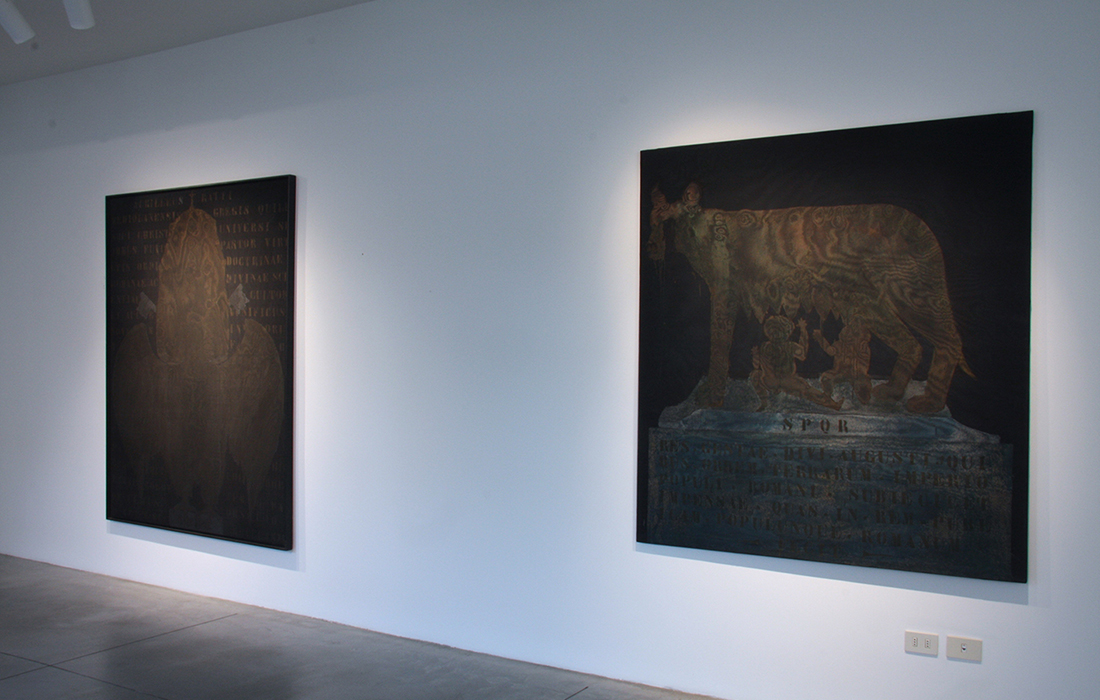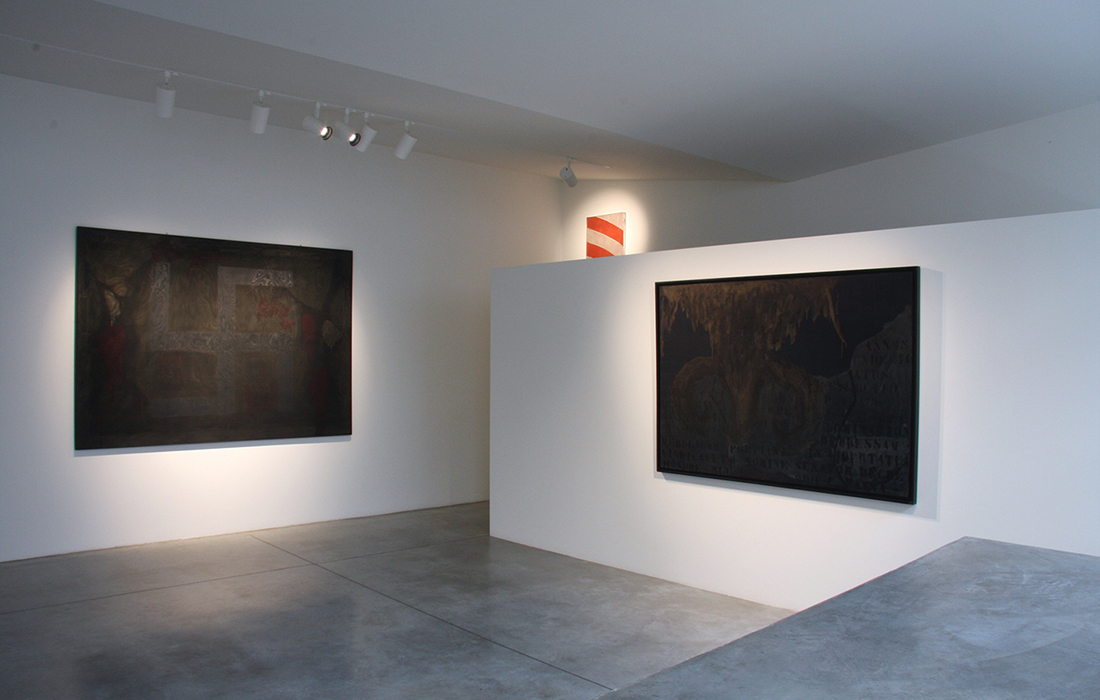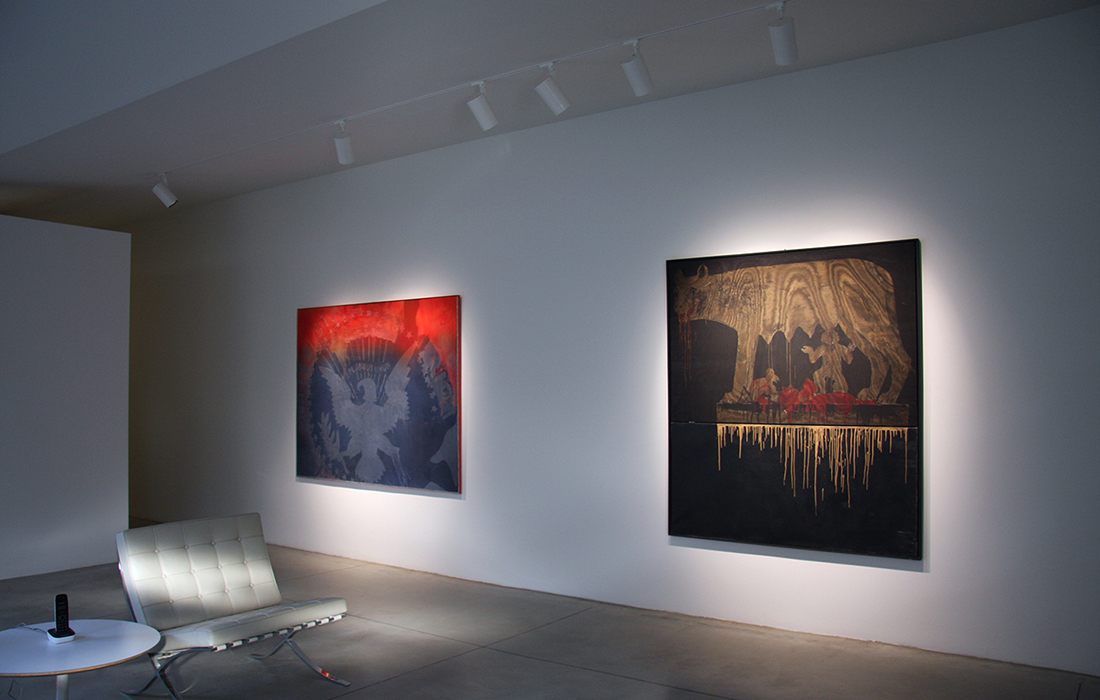February – March 2015
FRANCO ANGELI
by Alessandra Nappo
Studio Gariboldi is pleased to present the exhibition of the Roman artist Franco Angeli (1935-1988), one of the most important people (with Tano Festa and Mario Schifano) in the “Piazza del Popolo School” later called “Italian Pop Art”. The gallery shows some of the most significant Angeli’s artworks and documents the work of an author who has been able to leave an indelible mark in the Italian art scene after World War II. The gallery presents a selection of works of extraordinary importance: paintings exhibited at the Venice Biennale in 1964 as La Lupa and Stemma pontificio, works from eminent collections, Le Miniere di Re Salomone and Artiglio (both dated 1962 and once part of the Restany collection); big size artworks such as Souvenir di Roma (1964) and United States of America (1965); and pieces with non canonical forms such as Of America (1968), where the painted canvas is cut in two parts by a semicircular golden blade.
Franco Angeli, whose painting has drawn from a repertoire of ancient and modern symbols (the she-wolf, the eagle, the swastika, the hammer and sickle, the dollar), has been able to develop a language that was able to give voice to a whole generation – that of the sixties – and at the same time to keep his own identity. Angeli’s art was able to blend irony, history, memory and daily universe. Only a penetrating gaze, only a patient eye, which can linger and grasp what lies beyond the thin layer of organza overlying the pictures, can grab the artistic vitality of Franco Angeli. The colored veil comes from an urgency that is the artist need to distance himself from the image and what it represents, trying to mitigate its force, obtaining an aesthetic effect akin to a blurred photograph. Sometimes, however, the thin veil seems, according to the interpretation of Renato Barilli, “to give back that lost aura of authenticity”, and also “charm, mystery” to the symbols. A pictorial story in constant metamorphosis develops on the surface of these artworks; a tale in which the reference points are lost among the scattered fragments on the canvas and then only a vision able to go over the limit, to cross the threshold can put them back together.






